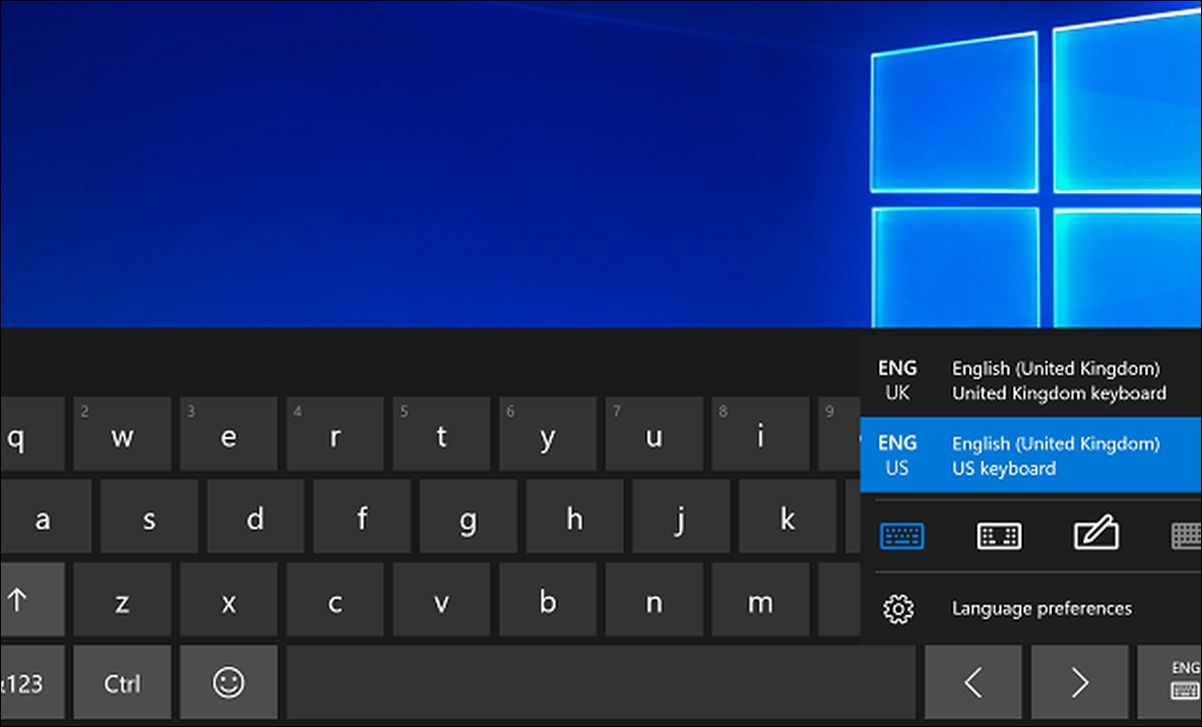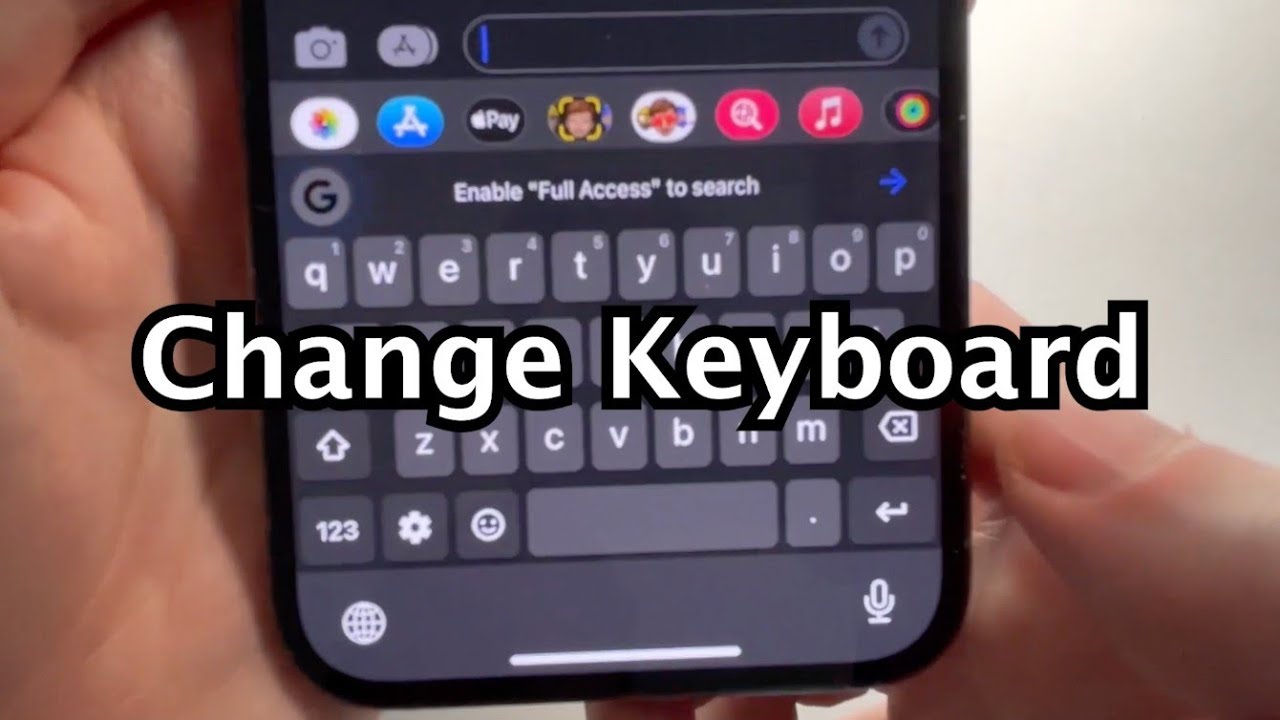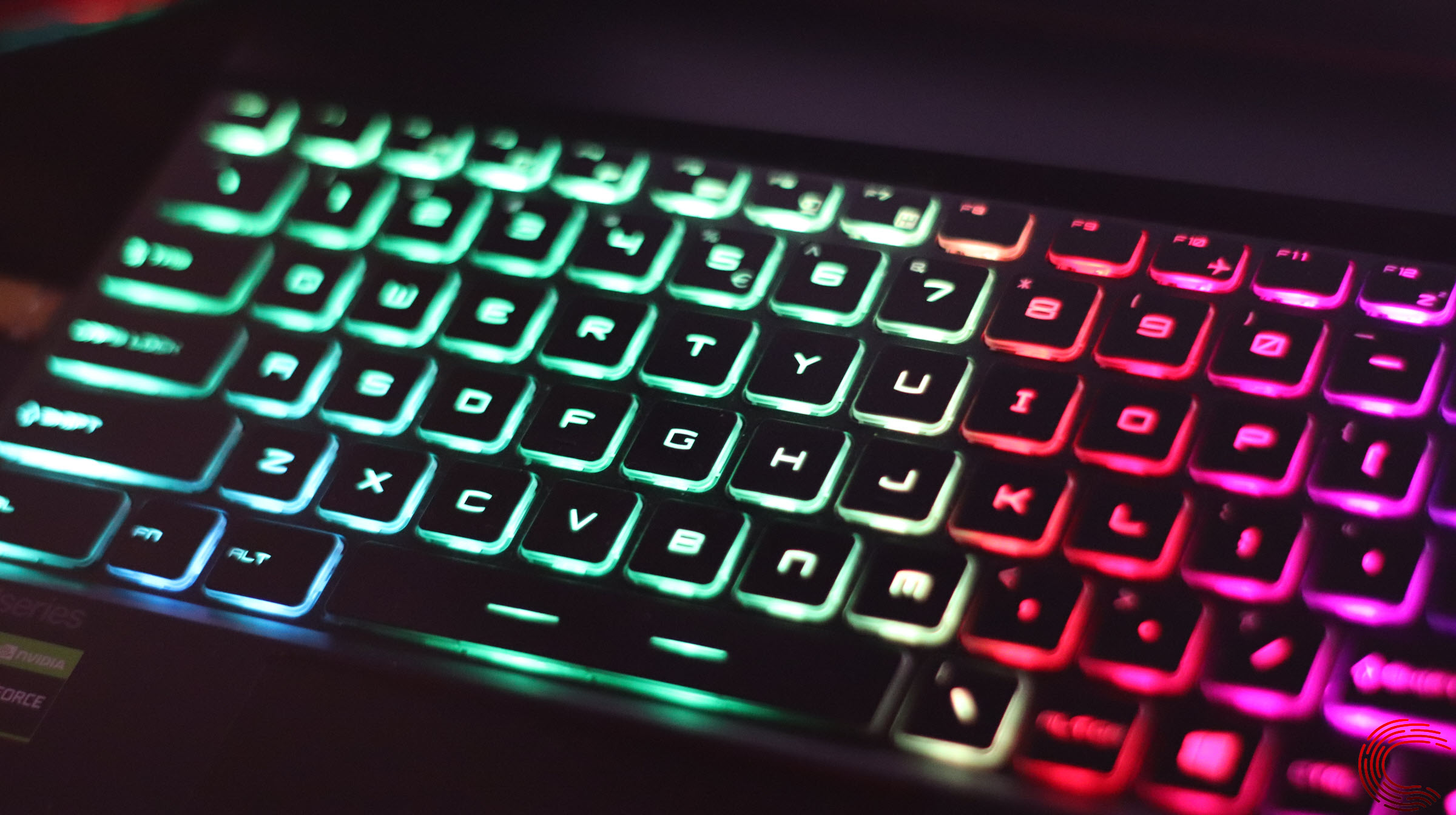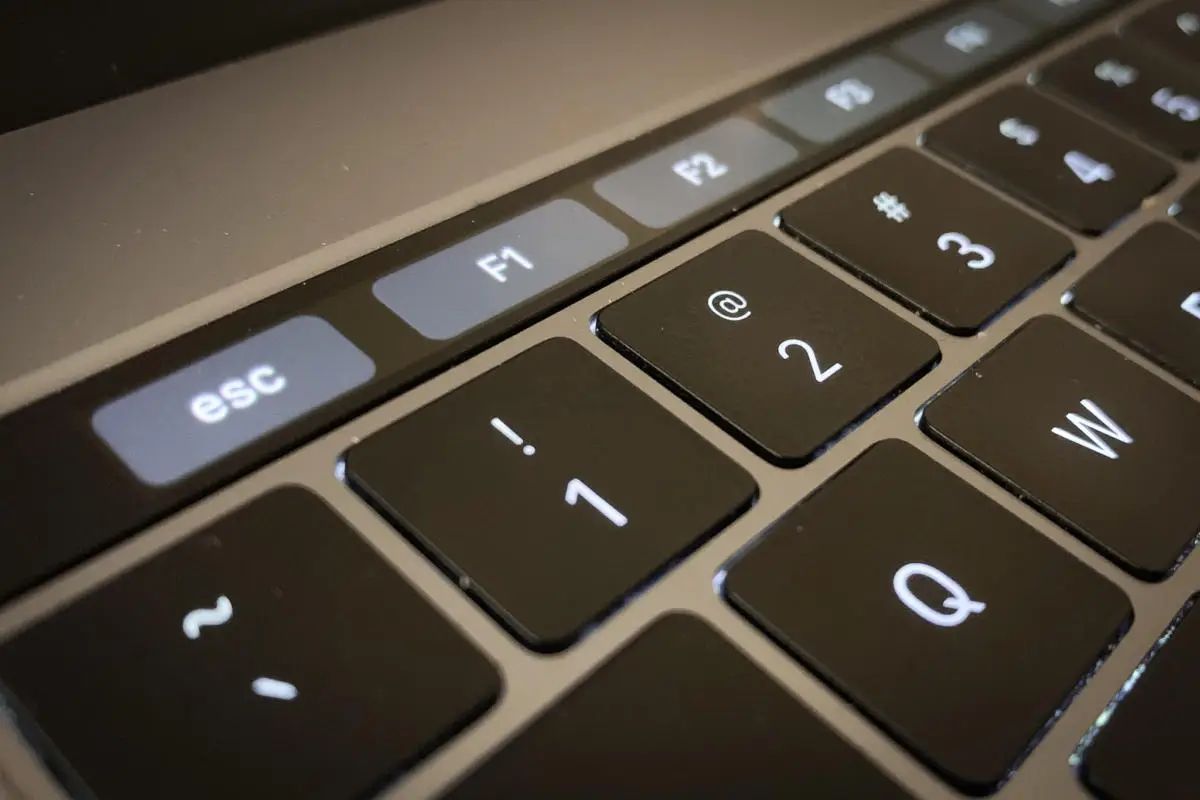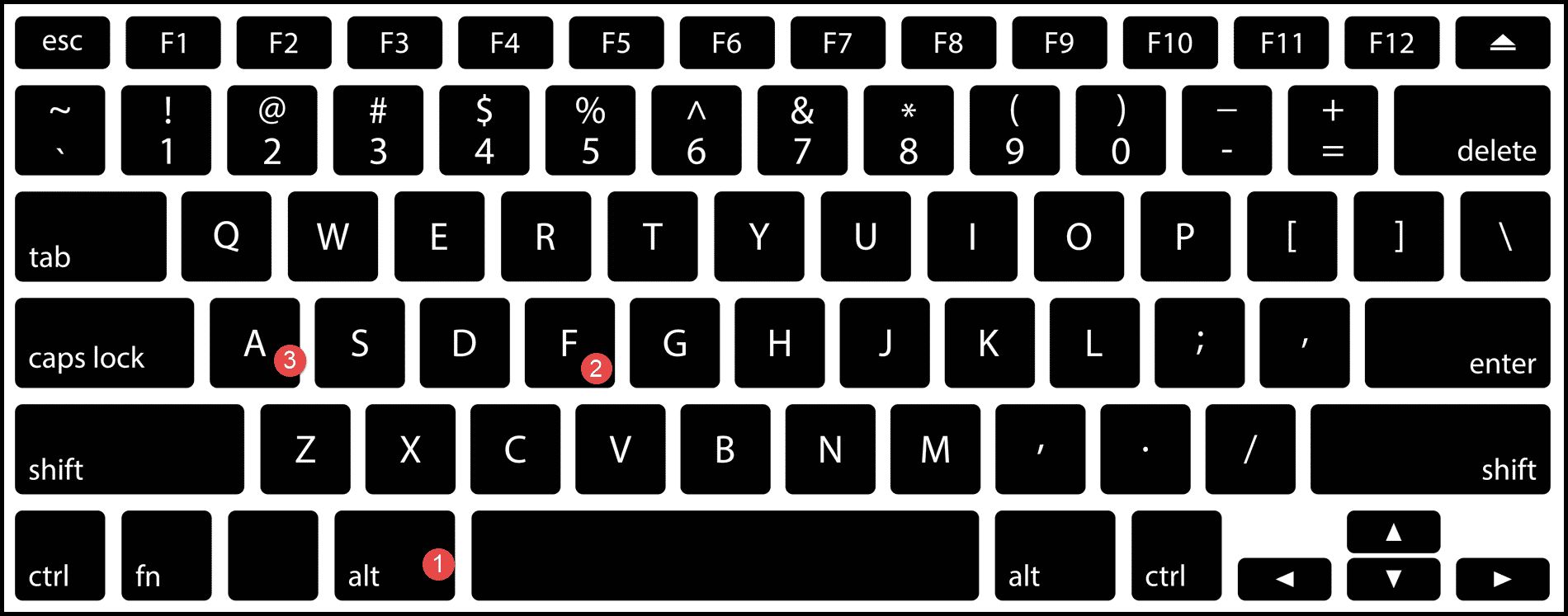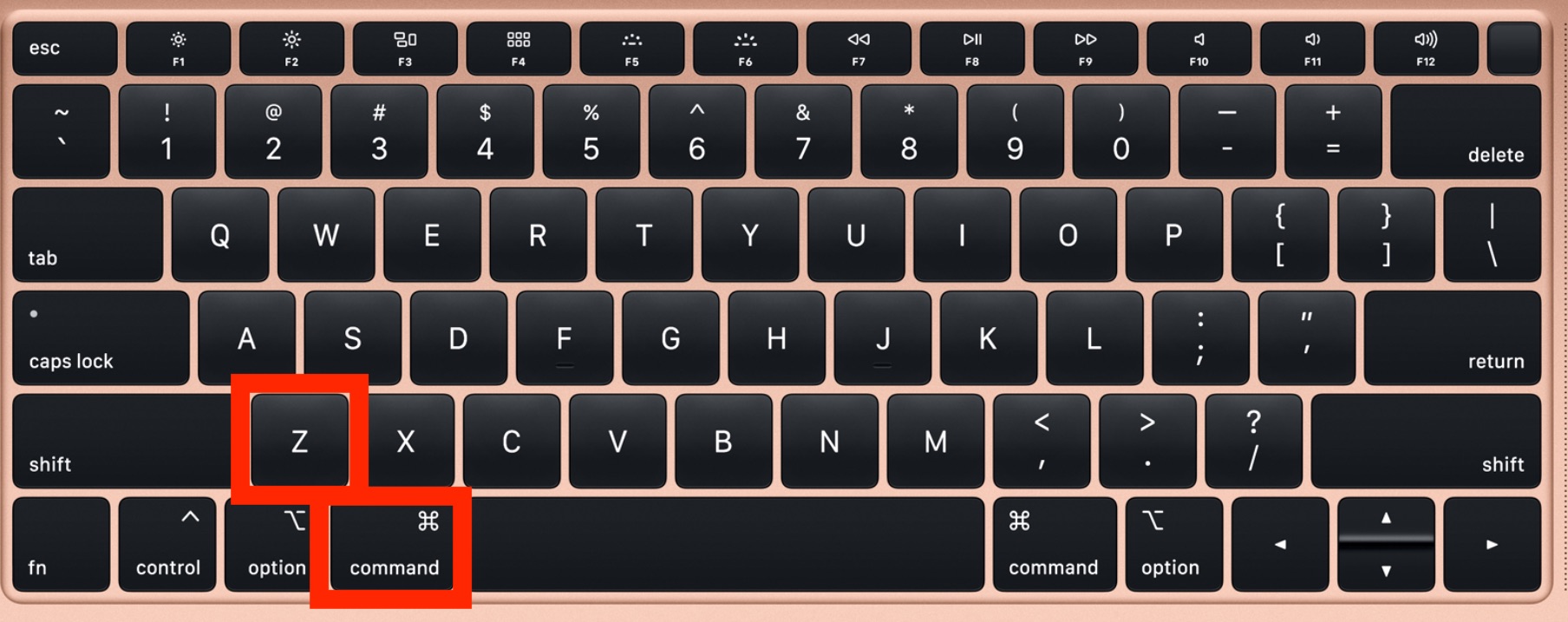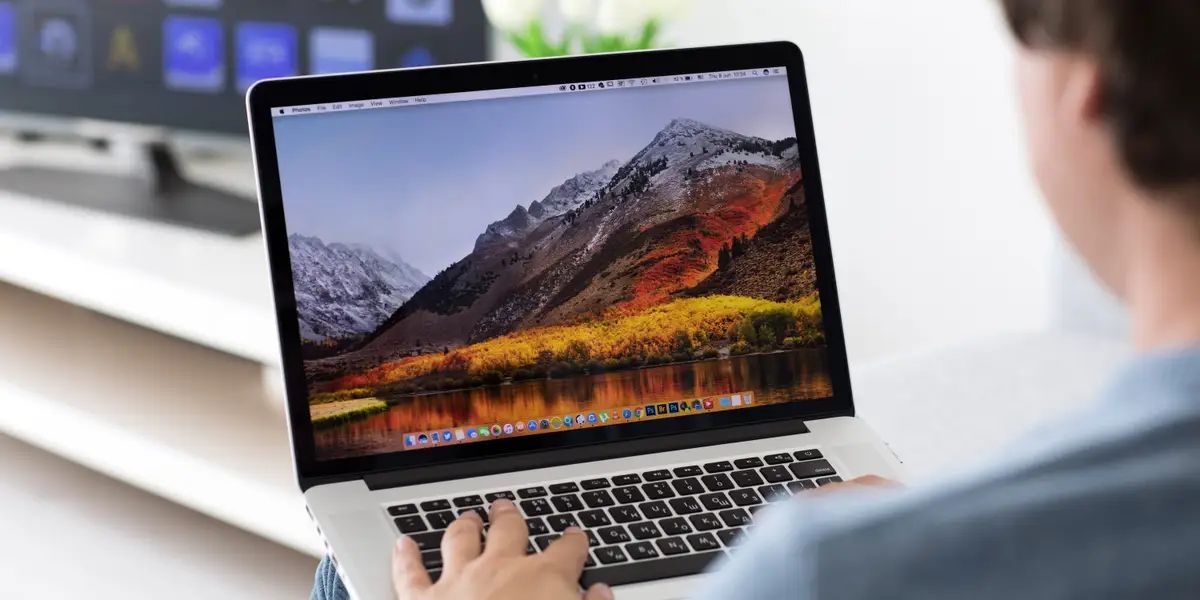Introduction
Keyboard shortcuts are combinations of keys that can be pressed to perform various functions on a computer. They provide a convenient and efficient way to navigate through applications, execute commands, and increase productivity. While most operating systems come with pre-defined keyboard shortcuts, users have the flexibility to customize these shortcuts to suit their specific needs and preferences.
In this article, we will explore the process of changing keyboard shortcuts in different operating systems, such as Windows, macOS, and Linux. We will also discuss the reasons why you might want to modify keyboard shortcuts and provide some common examples of shortcut changes. Additionally, we will share tips for testing and troubleshooting keyboard shortcut modifications.
Understanding how to change keyboard shortcuts can greatly enhance your workflow and make computer usage more comfortable and personalized. Whether you’re a writer, programmer, or avid computer user, adjusting keyboard shortcuts can help streamline repetitive tasks and provide a smooth and efficient user experience.
It’s important to note that changing keyboard shortcuts may require some technical knowledge and familiarity with your operating system. However, by following the instructions provided in this article, you will be able to customize your keyboard shortcuts easily and effectively.
So, let’s dive in and discover how to make your computer work even better for you by changing keyboard shortcuts!
Understanding Keyboard Shortcuts
Keyboard shortcuts are a combination of two or more keys that trigger a specific action on your computer. They provide a quicker and more efficient way to perform tasks, eliminating the need to navigate through menus or mouse-click on various options. By memorizing and utilizing keyboard shortcuts, you can significantly improve your productivity and save valuable time.
Keyboard shortcuts can be categorized into two types: system-wide shortcuts and application-specific shortcuts. System-wide shortcuts are available across the operating system and can be used in any application. These include shortcuts for tasks like copy (Ctrl+C), paste (Ctrl+V), and save (Ctrl+S). Application-specific shortcuts, as the name suggests, are tailored to specific applications and perform functions relevant only to that particular program.
To use keyboard shortcuts effectively, it’s essential to understand the key combinations used. They often involve modifier keys such as Ctrl (Control), Alt (Alternate), Shift, or the Windows key (Win) on Windows, Command (Cmd) or Option on macOS, and Ctrl or Alt on Linux. Modifier keys are usually pressed simultaneously with another key to activate a specific shortcut.
Most applications provide a list of available keyboard shortcuts in their documentation or help menu. It’s beneficial to familiarize yourself with these shortcuts for the applications you use frequently. Learning and using common keyboard shortcuts not only saves time but also reduces strain on your wrists by minimizing the need to repeatedly reach for the mouse.
Additionally, understanding the logic behind keyboard shortcuts can help you create your own personalized shortcuts or modify existing ones. By mapping frequently used actions or commands to easily accessible key combinations, you can tailor your shortcuts to match your workflow and preferences.
Overall, keyboard shortcuts are a powerful tool that can enhance your efficiency and productivity when using a computer. Whether you’re navigating through documents, editing text, or manipulating images, incorporating keyboard shortcuts into your workflow will simplify tasks and make your overall computer experience more enjoyable.
Why Change Keyboard Shortcuts?
While the default keyboard shortcuts provided by operating systems and applications are designed to be intuitive and convenient, they may not always align with individual preferences or workflow. Here are some reasons why you might consider changing keyboard shortcuts:
- Personalization: Changing keyboard shortcuts allows you to customize your computing experience according to your specific needs and preferences. By using shortcuts that are more comfortable or familiar to you, you can work more efficiently and reduce strain on your hands and wrists.
- Efficiency: Modifying keyboard shortcuts can streamline your workflow and make common tasks quicker and easier to perform. By assigning frequently used commands or functions to more accessible key combinations, you can save time and complete tasks more efficiently.
- Consistency: If you use multiple applications or switch between different operating systems, customizing keyboard shortcuts to match across apps can create a more consistent user experience. This eliminates the need to remember different shortcut combinations for each program and improves overall productivity.
- Conflict Resolution: In some cases, default keyboard shortcuts may conflict with shortcuts from other applications or system-wide functions. By changing these conflicting shortcuts, you can avoid accidental activations and perform tasks without any interruptions or unexpected results.
- Accessibility: Customizing keyboard shortcuts can benefit users with physical disabilities or impairments. By assigning shortcuts that are more accessible and easier to reach, individuals with limited mobility can navigate through applications and perform tasks more comfortably.
- Adaptation to Workflows: Everyone has their own preferred way of working. By changing keyboard shortcuts to match your workflow, you can align the shortcuts with the steps and actions you perform most frequently, making your work more efficient and intuitive.
Changing keyboard shortcuts is a personal choice that allows you to fine-tune your computer experience. It enables you to work more effectively, reduce repetitive movements, and customize your setup to suit your preferences. By taking advantage of the ability to modify shortcuts, you have the power to optimize your productivity and create a more enjoyable and personalized computing environment.
Common Keyboard Shortcut Changes
Customizing keyboard shortcuts gives you the flexibility to modify existing shortcuts or create new ones that better align with your needs and preferences. While the options are virtually limitless, here are some common keyboard shortcut changes that users often find useful:
- Cut, Copy, and Paste: The default keyboard shortcuts for cut (Ctrl+X), copy (Ctrl+C), and paste (Ctrl+V) are widely used. However, you may prefer different key combinations, such as using the Windows key along with the standard letter keys or assigning these actions to a single key.
- Undo and Redo: The default undo (Ctrl+Z) and redo (Ctrl+Y) shortcuts can be changed to match popular shortcuts used in other applications or to keys closer to your typing position.
- Save and Print: Modifying the default save (Ctrl+S) and print (Ctrl+P) shortcuts can help prevent accidental saves or prints and free up those key combinations for other frequently used commands.
- Application-Specific Shortcuts: Many applications have their own set of keyboard shortcuts specific to their features and functions. These shortcuts can be customized to match your workflow or to avoid conflicts with shortcuts from other applications.
- Navigation and Tab Control: Changing keyboard shortcuts for navigating between tabs or windows in browsers, file explorers, or text editors can make it easier to switch between different open documents or web pages swiftly.
- Global Search: If you find yourself frequently using the search function within applications or the operating system, assigning a keyboard shortcut to the search feature can save you time and improve accessibility.
- Screenshot and Screen Recording: Customizing shortcuts for taking screenshots or recording the screen allows you to capture moments or create tutorials more efficiently, using key combinations that are easy to remember.
- Volume and Media Control: Changing the keyboard shortcuts for adjusting volume, playing/pausing media, or skipping tracks can be useful for multimedia tasks, especially if you use dedicated media keys or multimedia keyboards.
Remember, these are just a few examples of common keyboard shortcut changes. The beauty of customization is that you can tailor the shortcuts to your specific requirements and preferences. Take some time to analyze your usage patterns and identify the tasks or commands you frequently perform, then consider modifying their shortcuts accordingly. By making these adjustments, you can create a more streamlined and efficient computing experience.
Changing Keyboard Shortcuts in Windows
Windows operating system provides convenient ways to modify keyboard shortcuts. Here’s how you can change keyboard shortcuts in Windows:
- Open the Control Panel by clicking on the Start button and selecting Control Panel from the menu.
- In the Control Panel, locate and click on the Keyboard or Keyboard and Mouse option. The exact name may vary depending on your version of Windows.
- A new window will open where you can customize various keyboard settings. Look for a tab or section that specifies Keyboard Shortcuts or Hotkeys.
- Select the desired shortcut you want to change and click on it to highlight the action.
- Click the Change Key Sequence or similar button to modify the shortcut.
- Enter the new key combination you want to assign to the shortcut. You can use any combination of letter keys, function keys, or modifier keys (Ctrl, Alt, Shift).
- Click OK or Apply to save the changes.
- Test the newly assigned shortcut to ensure it works as intended.
- Repeat the process for any other shortcuts you want to modify.
Note that the specific steps to change keyboard shortcuts may vary slightly depending on the version of Windows you are using. If you are unable to locate the Keyboard or Keyboard Shortcuts options in the Control Panel, you can try searching for “Keyboard” in the Windows search bar or the Help section for your specific Windows version.
Additionally, some applications may offer their own settings to customize keyboard shortcuts within the program itself. In such cases, you can typically access the keyboard shortcut settings from the application’s menu or preferences.
By customizing keyboard shortcuts in Windows, you can tailor your computer experience to your liking and work more efficiently with the key combinations that make the most sense for you.
Changing Keyboard Shortcuts in macOS
MacOS provides easy-to-use options for modifying keyboard shortcuts. Here’s how you can change keyboard shortcuts in macOS:
- Click on the Apple menu in the top-left corner of the screen and select System Preferences from the dropdown menu.
- In the System Preferences window, click on Keyboard.
- In the Keyboard tab, click on the Shortcuts tab at the top.
- From the sidebar on the left, select the category that contains the shortcut you want to modify, such as App Shortcuts or Services.
- In the main panel, locate the specific shortcut you wish to change and click on it to select it.
- Click on the existing shortcut keys to the right of the action, and then enter the new key combination you want to assign to the shortcut. You can use any combination of letter keys, function keys, or modifier keys (Command, Option, Control, Shift).
- Close the Keyboard Preferences window to save the changes.
- Test the newly assigned shortcut to ensure it works as intended.
- Repeat the process for any other shortcuts you want to modify.
macOS provides a range of built-in keyboard shortcuts, and you can also customize shortcuts for specific applications. Additionally, many applications have their own preferences or settings where you can modify keyboard shortcuts within the app itself.
By changing keyboard shortcuts in macOS to better suit your workflow and preferences, you can navigate your Mac more efficiently and perform tasks with ease using the key combinations that make the most sense for you.
Changing Keyboard Shortcuts in Linux
Linux offers flexibility when it comes to modifying keyboard shortcuts. The process may vary slightly depending on the distribution and desktop environment you are using. Here are the general steps to change keyboard shortcuts in Linux:
- Open the Settings or Preferences menu in your Linux distribution. This can usually be found in the main menu or the system tray.
- Look for the Keyboard or Keyboard Shortcuts option and click on it.
- A new window will open, displaying the current keyboard shortcuts and their corresponding actions.
- Select the shortcut you want to change and click on it to highlight it.
- Click the button to edit or modify the shortcut.
- Enter the new key combination you want to assign to the shortcut. You can use letter keys, function keys, or modifier keys (Ctrl, Alt, Shift).
- Save the changes and close the window.
- Test the newly assigned shortcut to ensure it works as intended.
- Repeat the process for any other shortcuts you want to modify.
The exact procedure for changing keyboard shortcuts may differ slightly between different Linux distributions and desktop environments. Some distributions, such as Ubuntu, offer user-friendly graphical interfaces for customizing keyboard shortcuts, while others may require editing configuration files.
If you prefer a more advanced approach, you can also modify the keyboard shortcut configuration files manually. These files are typically located in the ~/.config directory or under the /etc/xdg directory.
Keep in mind that some desktop environments, such as GNOME or KDE, may provide additional tools or settings specifically designed for managing keyboard shortcuts within the environment itself. Check the documentation or online resources related to your specific desktop environment for more detailed instructions on customizing keyboard shortcuts.
With Linux’s open-source nature, you have the freedom to fully customize and adapt the system to your needs. By changing keyboard shortcuts in Linux, you can create a personalized computing experience that aligns with your workflow and enhances your productivity.
Tips for Changing Keyboard Shortcuts
When changing keyboard shortcuts, keeping a few tips in mind can help you create an efficient and seamless computing experience. Here are some tips to consider:
- Plan ahead: Before making any changes, take some time to analyze your workflow and identify the tasks or commands you frequently perform. This will help you determine which shortcuts are most important to customize.
- Choose intuitive key combinations: Select key combinations that are easy to remember and trigger comfortably. Avoid assigning shortcuts that require complex finger movements or that conflict with existing system-wide or application-specific shortcuts.
- Ensure consistency: If you use multiple operating systems or applications, try to keep your keyboard shortcuts consistent across them. This will save you from confusion and make it easier to transition between different systems.
- Consider accessibility: Pay attention to the accessibility of your keyboard shortcuts. Avoid placing important shortcuts on hard-to-reach keys, and consider the needs of users with physical disabilities or impairments.
- Document your changes: It’s a good idea to keep a record of the keyboard shortcut changes you make. This can be useful for reference and if you ever need to reconfigure your shortcuts or share them with others.
- Test and iterate: After making changes, thoroughly test the new shortcuts to ensure they work as intended and don’t conflict with any other functions or applications. If necessary, refine and iterate on your shortcuts to find the perfect configuration.
- Explore app-specific options: Some applications offer their own settings or preferences where you can modify keyboard shortcuts. Take advantage of these options to tailor shortcuts specifically within the application.
- Keep backups: If you ever reinstall your operating system or switch computers, having a backup of your customized keyboard shortcuts will save you time and effort in restoring your preferred configurations.
- Stay up to date: Periodically check for updates to your operating system and applications. Major updates or new versions may introduce changes to default keyboard shortcuts or offer additional customization options.
By following these tips, you can effectively change keyboard shortcuts to match your workflow, enhance productivity, and create a personalized and streamlined computing experience that suits your needs.
Testing and Troubleshooting Keyboard Shortcut Changes
After making changes to your keyboard shortcuts, it’s important to test them thoroughly to ensure they work as intended. Here are some tips for testing and troubleshooting keyboard shortcut changes:
- Verify functionality: Test each modified shortcut to ensure that the assigned action is executed correctly. Make sure the new key combination activates the desired function without any conflicts or unexpected behavior.
- Pay attention to system-wide and application-specific conflicts: Check if any of your new keyboard shortcuts conflict with system-wide shortcuts or those assigned within specific applications. If conflicts arise, you may need to reassign or modify shortcuts to prevent unintended actions.
- Test in different applications: Ensure that the modified shortcuts work consistently across various applications. Switch between different software, such as text editors, browsers, and office suites, to confirm that the shortcuts function correctly in each environment.
- Check modifier key compatibility: Be aware of any limitations or issues related to modifier keys (Ctrl, Alt, Shift, etc.) when creating or changing shortcuts. Some applications may not respond well to certain combinations or may already use specific combinations for their own functionalities.
- Revisit frequently used shortcuts: Focus on the shortcuts you use most frequently and double-check that they are performing optimally. Make adjustments as needed to ensure rapid and convenient access to commonly performed tasks.
- Seek community resources: If you encounter difficulties or have questions during the process, consult online forums, user groups, or official documentation specific to your operating system and applications. These resources can often provide valuable insights and troubleshooting advice.
- Consider resetting to default: If you encounter persistent issues or find that customized keyboard shortcuts are causing more problems than benefits, you can revert to the default settings. This will restore the original shortcuts and help resolve any conflicts or inconsistencies.
- Revisit your changes periodically: As your computing needs evolve, it’s a good idea to revisit your keyboard shortcut changes from time to time. Evaluate whether they continue to serve your workflow effectively and make any necessary adjustments or refinements.
Remember that customization is a personal process, and what works well for one person may not work for another. Take the time to fine-tune your keyboard shortcuts and ensure they provide the desired functionality and efficiency without causing conflicts or frustration.
By thoroughly testing and troubleshooting your keyboard shortcut changes, you can identify and resolve any issues, ensuring a smooth and productive computing experience tailored to your preferences and needs.
Conclusion
Customizing keyboard shortcuts can greatly improve your productivity and enhance your overall computer experience. Whether you’re using Windows, macOS, or Linux, taking the time to modify shortcuts to match your workflow and preferences can streamline tasks, save time, and reduce repetitive movements.
Understanding the importance of keyboard shortcuts and how they function across different operating systems is key to making effective changes. By personalizing shortcuts, you can optimize your workflow, increase efficiency, and minimize strain on your wrists and hands.
Remember to plan ahead, choose intuitive key combinations, and ensure consistency when customizing your shortcuts. It’s crucial to test the modified shortcuts thoroughly in various applications to ensure they work as intended and don’t conflict with system-wide or application-specific shortcuts.
Furthermore, documenting your changes and staying up to date with system and application updates will help maintain a smooth and efficient computing experience. Additionally, being aware of troubleshooting techniques and seeking community resources can help address any issues that may arise during the customization process.
Ultimately, by customizing keyboard shortcuts to suit your needs, you can optimize your workflow, save time, and create a more personalized and enjoyable computing environment.







